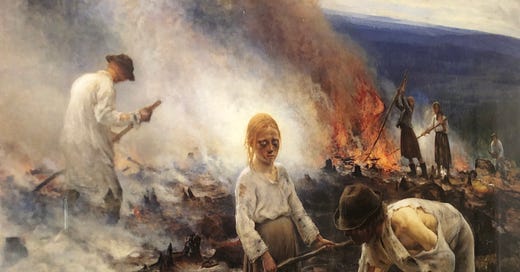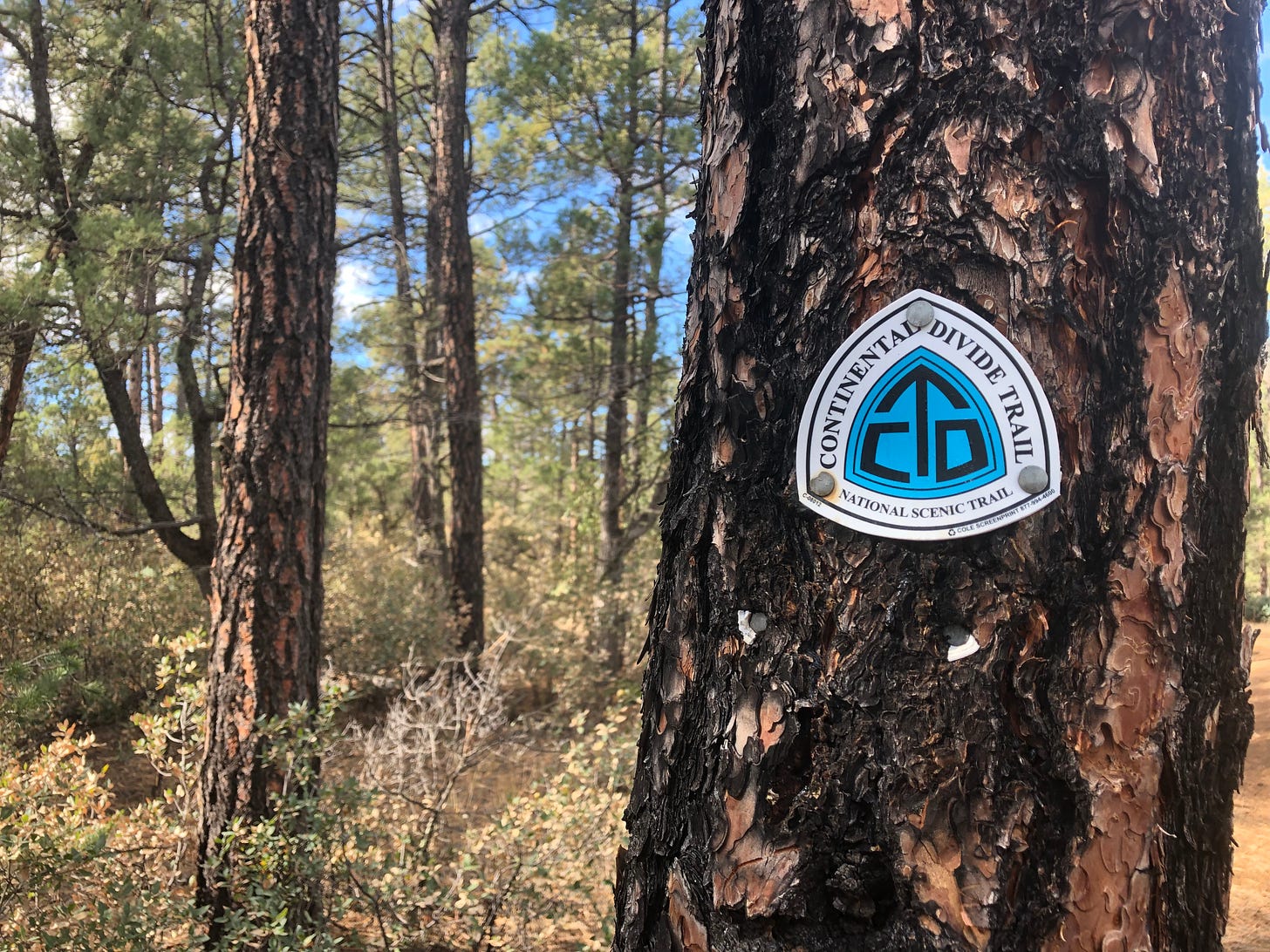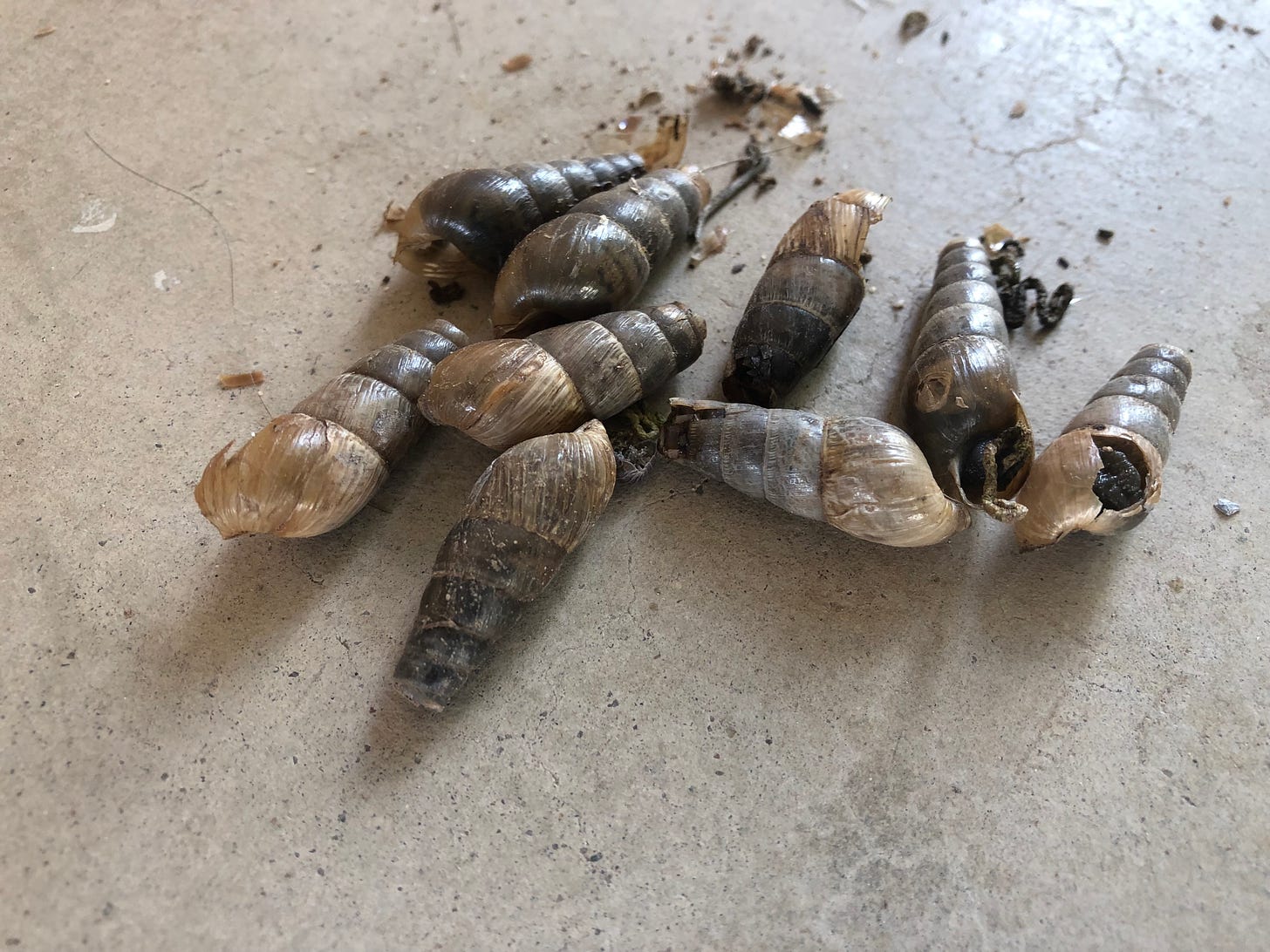Happy Boxing Day, Christmas, New Year, all the various holidays. The omicron surge has us hunkered down, glad to not be travelling. Judging by the posts coming hot and thick on my timeline, a lot of folks who had been careful and so far made it through the pandemic unscathed are now catching covid. An ignoble end for a year of so much unnecessary death. I’ll try to be back in two weeks with some predictions for 2022, but right now it all feels too fluid to do more than try to get out of the way.
Good amount of stuff below. If you are still in the holiday spirit——or in the mood to choke-slam the holiday spirit——I recommend my throwback story from last year, “Your Mind Is the Superfund Site.” I’ve also got a little art essay about one of my favorite grim paintings. And if you know anything about snails, I could use your help on a mystery.
If you like my writing or what I’ve written, I’d very much appreciate it if you forward solarshades.club with someone else who might enjoy it. And if you’ve found your way here without subscribing, do me a favor and click this button.
The New-New
Deep Meat Pre-Artisanal Hand-Strangled Elk Ad —— Lately I’ve been doing most of my online socializing and hanging out via various Discord servers. That, plus doing this newsletter, has helped wean me off scrolling Twitter for big parts of the day. Anyway, in the Near Futures Laboratory server, I’ve joined other smart folks to brainstorm some ridiculous conspicuous consumption habits for the future crypto-rich. Riffing off the $40/oz spear-caught tuna from my story “The Chaperone,” we came up with another bourgeois-sustainability-gone-too-far concept: hand-strangled wild elk meat. The joke, of course, is that the pursuit of anti-modern authenticity in food would lead a certain kind of person not to take up gardening or even hunting, but to purchase expensive luxury meat from a company that brags about sending burly, unarmed men into the tundra to take down big game with their bare hands. So, mostly just for fun, I wrote copy and eventually recorded a short audio spot ad for this dumb concept, which Julian Bleecker included on the NFL podcast as a satirical “sponsor” from the future. Plus, the episode is a great interview with my good friend Jay Springett. Check it out!
Award Eligibility Post 2021 —— if you’re in the SFF world, you’ve probably seen authors sharing end-of-year wrap-ups of which of their recent publications are eligible for which award categories. Well, I put together one too. If you’re a Hugo or Nebula voter, please do consider nominating one or more of these short stories, particularly “A Smell of Jet Fuel” and “Solarshades,” or giving them an upvote in on the Nebula Reading List.
Works in Process
The Remainder —— Made solid progress on the end of this The-Leftovers-with-covid-vibes novel, thanks to a nice handful of 900ish word days filling in the denouement. In fact I passed both the 200 page and the 65K word mark, which feels pretty good, makes it officially the longest thing I’ve ever written. A lot of what drove me on this novel was discovering the ins and outs of the possibilities the premise had opened up for me. Now that I’ve exhausted most of those, the act of winding down the book feels a bit more like work. I’ll be glad when I’m done in a month or so, so I can step back and figure out just what I’ve created.
ICYMI
“Your Mind is the Superfund Site” (Lightspeed Magazine, 2020) —— A darkly comedic, holiday-themed romp through an advertising-infested dreamscape. In future socialist-utopia Boston, hypnopomp Alleyah and hypnocath Tracey team up on the winter solstice to kick mascot ass in the collective subconscious. But can they track down and defeat the source of this literal capitalist nightmare——the mysterious King of Brands?
I wrote this story with C.Y. Ballard, inspired partly by a prompt I came up with years back with Adam Flynn. It turns out to be fun and cathartic to write about doing over-the-top imaginary violence to the Geico gecko or Flo from Progressive, and this remains one of my favorite pieces out there. Our dream is to one day see this made into a film starring some action-movie hero like Dwayne Johnson. The title is even a riff on a movie poster tagline for Inception (2010). We talk a bit more about the thinking behind the piece in this author spotlight interview. Here’s one more bit:
You can read more of my work via my website. If you’re a fan of the above, consider preordering my next book, Our Shared Storm: A Novel of Five Climate Futures, coming April 2022.
Art Collection
Good riddance to another cramped year of polycrisis. Way in the beforetimes of 2018 I spent the winter holidays visiting family friends in Europe after attending COP24 in Poland. Finland was a highlight, in particular the art I saw there. At the Finnish National Gallery I was struck by two paintings that I ended up buying prints of. The above is one of them, and indeed it is such a standout piece that I discovered later that it’s featured on the Wikipedia page for Finnish art.
There’s something about the colors and the composition that always reminds me of the Disaster Girl meme, though less sinister and more just brutal. In that context you get the sense that a fire catastrophe has struck, and the central girl has lost everything and has been left no recourse but to stir the ashes looking for nonexistant hope. It has real “there but for the grace of God go I” energy. Whenever I walk by it in my hall, I find myself feeling glad my house hasn’t burned down.
But, as always happens with art, I eventually stopped and really looked and the painting, and then went online and read up on it. Turns out this isn’t some scene of sudden, middle-class loss, but rather depicts the pre-industrial agricultural practice of “burn-beating.” Wet or sour topsoil is strewn with dry sticks and vegetation and then set on fire, after which the ashes are beat into the dirt with sticks (or by rolling heavy logs over the ground). All of which is to done to prepare untilled earth to grow crops like barley. The burning part mostly comes at the end of an arduous, multi-year process of felling forest and leaving the timber out to dry over the course of several summers. The life of impoverished subsistance farmers required a great deal of planning.
So I suppose the lesson here is that often the disaster isn’t the sudden shock, but the ongoing condition. The girl staring out at us, 14-year-old Johanna Kokkonen, is in her sorry situation because she was unlucky enough to be born poor and landless in a time before mechanized agriculture, in a place where people like her were used to advance a process of domestic colonization, converting old growth forest into land from which profit could be extracted. Certainly highlighting the plight of the rural poor was the goal of the artist, Eero Järnefelt. Eero’s playwright brother Arvid apparently once wrote, “If you have the strength, then toil, if you don’t then die.”
I’ve seen takes out there that this painting is a haunting reminder of the horrors of pre-industrial life, when famine was always right around the corner, and that we should all praise technological progress and capitalism for delivering us from such a nightmare. It is true that, had she been born in the same place a century later, Johanna would likely now be one of the most prosperous and stable people on the planet, supported by Finland’s generous welfare state, with access to excellent public resources, like free healthcare and Finland’s wonderful libraries. But this has as much to do with with social democracy than an ideologically neutral march of progress. No doubt one could find people today living in just as harsh economic conditions as 1893-Johanna, subjected to very similar physical toils. Perhaps in Brazil, slash-and-burn clearing the Amazon rainforest.
Anyway, it’s a great painting that provokes such debate. If you’re ever in Helsinki, I can’t recommend seeing it in person enough.
Material Reality
I mentioned last newsletter that I’d been feeling a sense of creeping unreality as December darkness set in, and in my defense I wasn’t alone. It was a weird, hungover couple weeks feeling off in my own head. But thankfully C and I had the chance to get out of our routines and to spend a couple nights in a cabin in New Mexico, near the southern part of the Gila National Forest. The roadtrip combined with the high pine-soaked air shook me out of my funk, as did a long, easy hike out-and-back on part of the legendary Continental Divide Trail.
The Continental Divide refers to the boundary between the watersheds that drain into the Pacific Ocean and those that flow into the Atlantic/Arctic. So the CDT is one of those trails that stretches the north-south length of USA, like the Pacific Crest Trail or the Appalachian Trail but longer. The section we hiked was mostly low curving hills under big open sky——the kinda landscape that doesn’t photograph well but feels fantastic to walk through. The flora was that interesting alpine desert, where hip-high cactuses grow around the roots of tall spruce trees and Ponderosa pines. Mostly, though, it was just cool to briefly set foot on a trail with grand ambitions and deep hydrological signficance
So all that was nicely grounding, but as soon as we got back material reality seemed intent on spooking me back into my funk. Harsh cold followed us home, and we had to get into the habit of covering our garden plants with burlap when the sun went down and the temps dived into the 40Fs. Everything except the basil seems to have made it through okay, thankfully.
One evening, moments after coming in from flipping the burlap, C looked out the kitchen window and said, “Is that a fox?” I would’ve assumed she mistook a cat, had I not myself gotten a glimpse of it, perched high on our backyard wall, gray and ginger-red with the unmistakeable big ears and bushy tail. I figured it was some sort of traveling fluke, wandered too far out of the desert its migration further south, but a little googling turned up that, no, apparently foxes just live in Tempe. Somehow, after almost five years in this house, this is the first fox I’ve seen.
Then, in a last bout of strangeness, we had a full day of thick, persistent on Friday——a wet Christmas, if you will. Very odd for the season, since we get most of our rain during the August monsoon. Today when I set myself up on the patio to finish up this newsletter, I noticed a bunch of snail shells scattered in one corner area. The snails were, sadly, dead. Here they are swept together:
I don’t really know how or why the snails ended up on the patio, but I assume it has something to do with the rain. Maybe they climbed up there to escape the spreading puddles. Or maybe a bird collected them and took shelter in that particular spot to pick at them, though that seems more far fetched. The only clue is this pattern of glossy slime trails on the nearby tile path. You can see more snail shells scattered between the tile.
Like the fox, we basically never see snails around here, though I guess I believe they exist——hopefully with a life cycle that spares them the dry summer heat. I don’t really have a moral here, just wanted to share my fascinated confusion. If anyone has an explanation for how all these snails ended up stranded and dead next to my writing spot, I’m all ears.










During the summer we spent on the Gila River reservation just south of you, we saw quite a few giant snails, not long like yours but about the size and shape of a fist. I have read that the desert has more and more varied fauna than any other kind of environment.